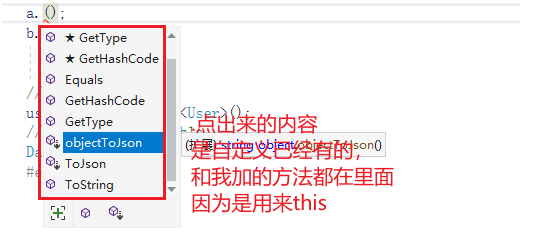用法1 this代表当前类的实例对象 当我们定义了一个类的全局变量时 而该类方法中也声明了相同的参数名时 如何区分两个相同参数名称的调用 使用this可以更直观地看到this.参数名 为全局参数。
首先声明一个类
public class TestThisClass { //用法一 this代表当前类的实例对象 private string scope = "全局变量"; public string getResult() { string scope = "局部变量"; // this代表TestThisClass的实例对象 // 所以this.scope对应的是全局变量 // scope对应的是getResult方法内的局部变量 return this.scope + "-" + scope; } }
我在mian函数中使用
public static void Main(string[] args) { //用法一 this代表当前类的实例对象 TestThisClass testThisClass = new TestThisClass(); Console.WriteLine(testThisClass.getResult()); }
输出结果 注意是先全局变量再局部变量

用法2 用this串联构造函数 (:this()方法) 目的是为了实例化该类时 还会先自动调用一次base()中对应参数的方法类 再继续执行原本的方法
首先声明一个类
public class TsetThisCLClass { public TsetThisCLClass() { Console.WriteLine("无参构造函数"); } // this()对应有两个参构造方法TsetThisCLClass(string text, string text2) // 先执行TsetThisCLClass(string text, string text2),后执行TsetThisCLClass(string text) public TsetThisCLClass(string text) : this("李四", text) { Console.WriteLine(text); Console.WriteLine("有参构造函数"); } public TsetThisCLClass(string text, string text2) { Console.WriteLine(text + text2); Console.WriteLine("有两个参数的参构造函数"); } }
我在mian函数中使用
//用法二 用this串联构造函数 (:base()方法) TsetThisCLClass test = new TsetThisCLClass("张三");
输出结果 注意是先输出base中带两个参数的方法 再输出本身

用法3 为原始类型扩展方法 主要是用来我们平时经常用到的类型 (string,object)
首先声明一个扩展类
public static class Extends { // string类型扩展ToJson方法 public static object stringToJson(this string Json) { return Json == null ? null : JsonConvert.DeserializeObject(Json); } // object类型扩展ToJson方法 public static string objectToJson(this object obj) { var timeConverter = new IsoDateTimeConverter { DateTimeFormat = "yyyy-MM-dd HH:mm:ss" }; return JsonConvert.SerializeObject(obj, timeConverter); } }
具体调用
object a = "asjfh"; string b = "afsdd"; a.objectToJson(); //这里的a是object类型 他可直接调用扩展方法 this object方法中声明的内容 b.stringToJson(); //这里的b是string类型 他可直接调用扩展方法 this string方法中声明的内容

举个例子 .net core注入配置文件 使用this 方法
public void ConfigureServices(IServiceCollection services) { var builder = new ConfigurationBuilder(); builder.AddJsonFile($"{AppDomain.CurrentDomain.BaseDirectory}/A.json", false, true); var config = builder.Build(); services.AddAlhgInfoConf(config);//调用下面的方法 }
再声明一个方法
//这里的方法 声明了参数 this IServiceCollection services 所以上面的services可以直接调用AddAlhgInfoConf该方法 这是属于this的扩展方法 public static IServiceCollection AddAlhgInfoConf(this IServiceCollection services, IConfiguration configuration) { services.Configure<AlhgInfoConf>(configuration); return services; }
分类:
.NET
来自:https://www.cnblogs.com/yunnn/p/15573062.html






【推荐】国内首个AI IDE,深度理解中文开发场景,立即下载体验Trae
【推荐】编程新体验,更懂你的AI,立即体验豆包MarsCode编程助手
【推荐】抖音旗下AI助手豆包,你的智能百科全书,全免费不限次数
【推荐】轻量又高性能的 SSH 工具 IShell:AI 加持,快人一步
· Manus重磅发布:全球首款通用AI代理技术深度解析与实战指南
· 被坑几百块钱后,我竟然真的恢复了删除的微信聊天记录!
· 没有Manus邀请码?试试免邀请码的MGX或者开源的OpenManus吧
· 园子的第一款AI主题卫衣上架——"HELLO! HOW CAN I ASSIST YOU TODAY
· 【自荐】一款简洁、开源的在线白板工具 Drawnix
2022-10-25 Node.js安装详细步骤教程(Windows版)
2022-10-25 elasticsearch-head-master可视化工具安装
2022-10-25 ElasticSearch-8.4.3-windows安装与配置